This article was medically reviewed by Jennifer Boidy, RN. Jennifer Boidy is a Registered Nurse in Maryland. She received her Associate of Science in Nursing from Carroll Community College in 2012.
There are 18 references cited in this article, which can be found at the bottom of the page.
This article has been viewed 71,892 times.
Many different problems can cause vomiting for children – viruses, poisoning, motion sickness, and other physical issues. Vomiting in children can be a normal response to being sick, in which case it will pass on its own.[1] However, vomiting can also be a sign of something more serious or lead to dangerous dehydration. Learn to care for a child who is vomiting to improve their comfort and keep them from having complications, and be able to recognize signs of a serious problem that requires medical attention.
Steps
Dealing With Children Who Are Vomiting
-
1Keep the child hydrated. Avoid giving the child anything to drink or eat within 30-60 minutes of vomiting or if the child remains nauseous. Then, have them drink small sips of a clear, non-carbonated fluid, about a half ounce every 5-10 minutes. If the child vomits after this, start over and wait another 30-60 minutes. If they are very nauseated or have trouble swallowing, have them suck on ice chips or fruit pops to get small amounts of fluid.[2]
- Pedialyte can be used to rehydrate, too. Since it’s usually dosed by the child’s body weight, you can call your doctor if you need help understanding how much to give your child. Also consult a doctor or pharmacist for advice on how much to give to an infant.[3]
- Dilute Gatorade or other sports drinks with 50% water.[4]
- If the child goes 8 hours unable to keep fluids down, take them to the doctor. There’s a high risk they will get dehydrated.
- Breastfeeding babies should be given breast milk.
-
2Give them bland foods. Crackers, toast, and gelatin (like jell-o) are a good place to start. If they vomit these up, skip food for now and continue with fluids. Once they can keep down gelatin and toast, try more salty, high-protein, high-carbohydrate foods like rice, cereal, and fruit. Wait to give the child any solid foods until at least 6 hours after they last vomited (fluids and soft foods are okay sooner).[5]
- Don’t give them fatty or spicy foods for a few days after they stop vomiting, since they can be hard to digest.
- Wait 30-60 minutes after vomiting to give them any food or water, unless it’s very small sips of water. This lets their stomach recover a little.[6]
Advertisement -
3Feed breastfed babies in small increments. If your young child is vomiting due to an illness or simply spits up a lot, try feeding them in smaller amounts more often. Talk to your healthcare provider about how best to do this. You can probably slowly increase the amount you breastfeed at a time as symptoms subside.[7]
-
4Keep them home from school. Your child needs rest while they are sick, and if vomiting is due to a common virus they are highly contagious while they’re vomiting. A child with either rotavirus or norovirus (the two most common causes of “stomach flu”) can be contagious for up to 2 weeks after they’re sick. You don’t have to keep them out of school for this long, but keep them home for at least 48 hours after they stop vomiting or having diarrhea.[8]
- When they do go back to school, instruct them on proper hand washing techniques. Demonstrate how to cough or sneeze into the crook of your arm, and how to properly wash hands with soap and hot water. Good hygiene can help prevent the spread of infection.
Minimizing Discomfort
-
1Have the child rest. Don't force a child to stay in bed, but limit their activities. Try reading to them, playing a board game in bed, or keeping them otherwise calm and still. Ample rest will help them recover more quickly.[9]
- Roll young children and babies who are vomiting onto their side or stomach to prevent them from choking on vomit.[10]
-
2Avoid triggering vomiting. Avoid strong smells and other triggers when your child is nauseated. Driving, flickering lights, smoke, perfume and other strong smells, and hot humid rooms can worsen nausea and vomiting.[11]
-
3Minimize motion sickness. Some vomiting in children can be caused by motion sickness, the queasy feeling you get when traveling. If the child’s vomiting is associated with being in the car, on a plane, or on a boat and occurs at no other time, they likely have motion sickness. Try to minimize motion sickness during traveling by:[12]
- Letting the child sit in the front passenger’s seat of the car if they’re over 12 years old – this usually improves motion sickness over being in the back seat.
- When flying, get a seat over the front edge of the wing, and direct airflow from the vent onto your child’s face.
- On a boat, get a cabin near water level at the front or middle of the boat.
- Face forward on trains, and try to sit next to a window near the front of the train.
- Give them dry crackers and a flat soda like ginger ale.
- If the child is old enough to follow directions, tell them to keep their head still (don’t read or watch videos), and focus on a stationary object or the horizon in the distance.
- Giving a child over 2 years old Dramamine for Kids or similar medicine approved for children.[13]
-
4Give the child extra love and attention. Vomiting can be both uncomfortable and scary for a child. Give them extra care by spending time with them doing calm activities like reading or playing board games. Comfort them physically by stroking their hair, holding their hand, or rubbing their back – especially while they’re vomiting. Help them get cleaned up afterwards by wiping their forehead with a cool cloth, or helping them wash out their mouth with water.
-
5Sanitize the house after their illness. “Stomach flu” germs get airborne when a child vomits or has diarrhea and can remain contagious on household surfaces even after the child gets well. To prevent re-infection or infecting others, clean all household surfaces once your child has stopped vomiting and having diarrhea.[14] Use disinfectant products that work against viruses, clean all surfaces with 1 cup bleach in 1 US-quart (950 ml) water, or use a steam cleaner.
- Be careful when having visitors over the next two weeks, especially children, since someone with rotavirus or norovirus may remain contagious over this time period, even if they have recovered.
Seeking Medical Care
-
1Look for signs of poisoning. If you suspect poisoning, call the Poison Control Center (1-800-222-1222 in the United States) or emergency medical services immediately. If vomiting occurs suddenly, take a quick look for signs of poisoning: Suspicious containers such as medications, cleaning solvents, or poisons which small children may have found. Check the vomit for blood, which can indicate poisoning. Smell the child's breath – if there is any chemical, fruity, or unusual odor, suspect poisoning.[15]
- If the child is old enough, ask them if they ate or drank something they found. Try to appear calm and not angry to encourage the child to tell you honestly.
-
2Go to the doctor immediately if your child is dehydrated. Vomiting and diarrhea in children can quickly lead to dehydration, which can have serious consequences for kids. Take your child to the doctor or emergency room right away or call 911 if they exhibit any severe signs of dehydration such as:[16]
- Extremely dry mouth, dry skin or no tears when crying.
- Passes out.
- Cannot stand due to weakness or dizziness.
- Is lethargic or unable to think clearly.
- Is older and has not urinated in 12 hours or longer.
- If you notice less severe symptoms of mild or moderate dehydration, like not drinking or eating enough, dark yellow urine or less frequent urination, dry mouth/eyes, irritability, or vomiting more than once, call your doctor, especially if your child is less than 1 year old since dehydration can happen much more quickly in younger children.
-
3See your care provider for severe or persistent vomiting. Take the child to their doctor if vomiting lasts longer than 24 hours, the child also has diarrhea, abdominal pain, or black or tarry stools, or the vomit contains greenish material or blood (which may appear bright red or the vomit might look dark like coffee grounds). If the child vomits several times an hour for several hours, that’s also severe enough to see the doctor.[17]
- Consult a doctor if your child has recently started a new medication. Their vomiting may be a serious reaction to the new medicine.
- Some babies up to 4-5 months old vomit or spit-up because of a condition known as Gastroesophageal Reflux Disease (GERD). If your child seem uncomfortable or in pain and /or develops breathing problem associated with spitting up, talk to your pediatrician or family practitioner.[18]
-
4Go to the doctor if vomiting occurs with a high fever. Fevers can contribute to dehydration in children and can cause serious problems. Take your feverish, ill child to see their doctor if:[19]
- A baby up to 3 months old has a fever of 100.4°F (38°C) or higher (get emergency help immediately, even if not vomiting).
- A child up to 2 years old has a fever of 100.4°F (38°C) (okay to see the regular doctor).
- A child of any age has a fever of 100.4°F (38°C) or higher that keeps coming back or lasts longer than 24 hours.
-
5Seek medical care for projectile vomiting in an infant. If a newborn is unable to feed due to projectile vomiting, they may have a condition called pyloric stenosis. This condition is treatable with surgery, and prompt treatment is important so the baby can start to feed properly and gain weight.[20]
- Pyloric stenosis usually develops in children under 3 months of age.
- Projectile vomiting is forceful vomiting during which the baby might eject liquids for up to several feet.
-
6Get help soon if the child has severe pain or “currant jelly” stool. A disorder called intussusception sometimes occurs, usually in children under 3 years old. This is when part of the intestine “telescopes” into another part, causing a block in the intestine. This can be a serious medical concern, so get help right away if vomiting is accompanied by:[21]
- Abdominal pain, usually occurring every 15-20 minutes then becoming more constant as time passes. A young child with abdominal pain might pull their knees to their chest and cry.
- Stool mixed with mucus and blood, called “currant jelly stool” because of how it looks.
- Diarrhea.
- Fever.
- Lethargy or unusual weakness or sleepiness.
- A lump in the abdomen.
-
7Call emergency services if vomiting is due to an allergic reaction. Vomiting that occurs right after a bee sting or introduction of a new food (including milk) may be due to a severe allergic reaction called anaphylaxis.[22] Very quickly look for other signs of allergic reaction as shown below. If the child has an Epi pen, use it right away. If not, call for emergency help and follow up with your doctor to discuss long-term management. Look for:[23]
- Hives or a rash.
- Flushed or pale skin.
- The child feeling warm.
- Visible swelling of the child’s tongue or lips, or swelling of the tongue or throat as shown by wheezing or trouble breathing.
- A fast, weak pulse.
- Fainting.
-
8Seek Emergency Care for other serious symptoms. No matter what is causing a child’s vomiting, some signs and symptoms indicate a serious problem. Call emergency services or take your child for emergency care if vomiting occurs with any of the following:[24]
- Trouble breathing.
- Difficulty waking up or staying awake, or confusion.
- Seizure.
- Racing or irregular heartbeat.
- No bowel movement for 3 days or longer.
- Stiff neck or severe headache.
- Trouble urinating or pain when urinating.
- Blood in the vomit or stool.
- Greenish color to vomit.
References
- ↑ https://www.healthychildren.org/English/health-issues/conditions/abdominal/Pages/Treating-Vomiting.aspx
- ↑ https://www.nhsinform.scot/illnesses-and-conditions/stomach-liver-and-gastrointestinal-tract/vomiting-in-children-and-babies
- ↑ https://static.abbottnutrition.com/cms-prod/similac.ca/img/en-pedialyte-prodinfo.pdf
- ↑ https://www.healthychildren.org/English/health-issues/conditions/abdominal/Pages/Drinks-to-Prevent-Dehydration-in-a-Vomiting-Child.aspx
- ↑ https://kidshealth.org/en/parents/vomiting-sheet.html
- ↑ https://www.nationwidechildrens.org/conditions/vomiting
- ↑ https://kidshealth.org/en/parents/vomiting-sheet.html
- ↑ https://www.nhsinform.scot/illnesses-and-conditions/stomach-liver-and-gastrointestinal-tract/vomiting-in-children-and-babies
- ↑ https://www.nationwidechildrens.org/conditions/vomiting
- ↑ https://www.healthychildren.org/English/health-issues/conditions/abdominal/Pages/Treating-Vomiting.aspx
- ↑ https://my.clevelandclinic.org/health/symptoms/8106-nausea--vomiting
- ↑ https://my.clevelandclinic.org/health/symptoms/8106-nausea--vomiting
- ↑ https://www.seattlechildrens.org/conditions/a-z/motion-sickness/
- ↑ https://medlineplus.gov/cleaningdisinfectingandsanitizing.html
- ↑ https://www.stanfordchildrens.org/en/topic/default?id=first-aid-for-poisonings-90-P02815
- ↑ https://kidshealth.org/en/parents/dehydration.html
- ↑ https://www.msdmanuals.com/home/children-s-health-issues/symptoms-in-infants-and-children/vomiting-in-infants-and-children
- ↑ https://www.niddk.nih.gov/health-information/digestive-diseases/acid-reflux-ger-gerd-infants/symptoms-causes
- ↑ https://www.nhsinform.scot/illnesses-and-conditions/stomach-liver-and-gastrointestinal-tract/vomiting-in-children-and-babies
- ↑ https://www.aboutkidshealth.ca/Article?contentid=457&language=English
- ↑ https://kidshealth.org/en/parents/intussusception.html
- ↑ https://www.healthychildren.org/English/health-issues/injuries-emergencies/Pages/Anaphylaxis.aspx
- ↑ https://www.hopkinsmedicine.org/health/conditions-and-diseases/food-allergies-in-children
- ↑ https://my.clevelandclinic.org/health/symptoms/8106-nausea--vomiting
- ↑ http://kidshealth.org/en/parents/childs-cough.html
About This Article
If your kid is vomiting, keep them home from school and encourage them to rest and drink plenty of water. If they've vomited within the last 30 - 60 minutes, avoid giving them anything to eat or drink, as their stomach will still be very sensitive. Then, keep them hydrated with about a half ounce of water every 5-10 minutes. Additionally, feed them bland foods like crackers, toast, and jell-o, which will be easier on their stomach. Vomiting is never a pleasant experience, so make sure to give your child extra love and affection by reading, playing games, or cuddling with them. For more tips from our Medical co-author, including how to avoid vomiting triggers like strong smells, read on!
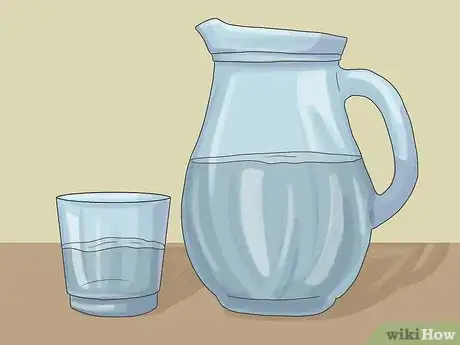

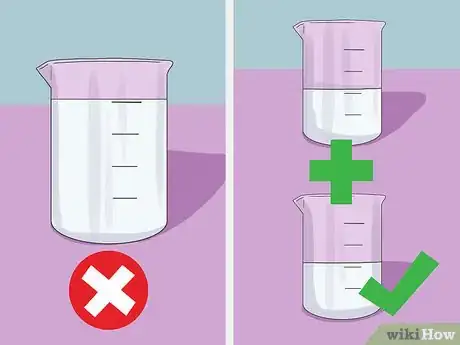
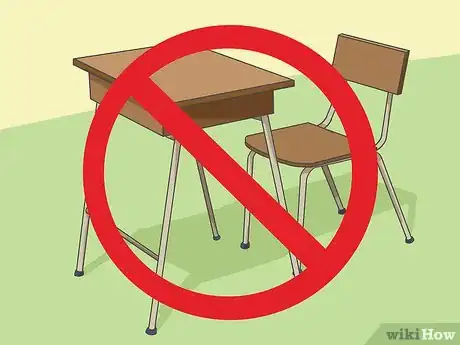

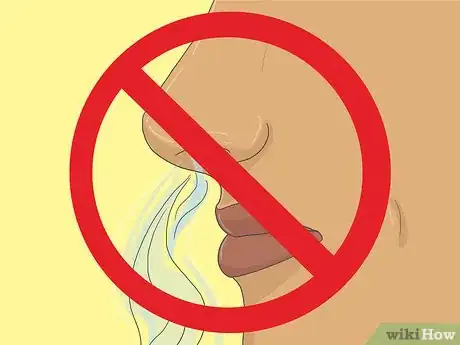
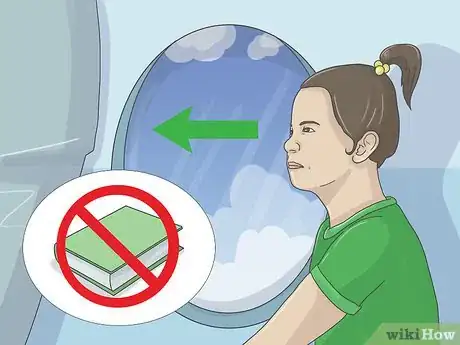
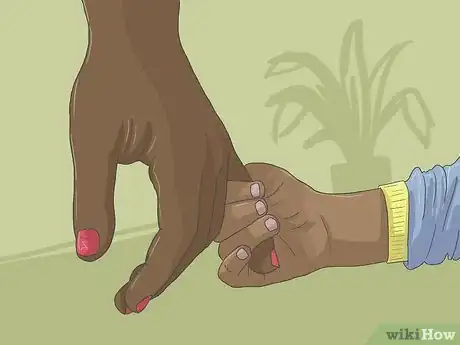

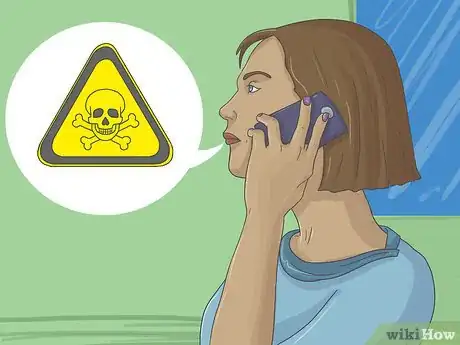

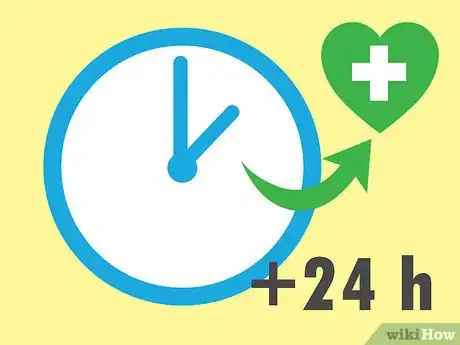
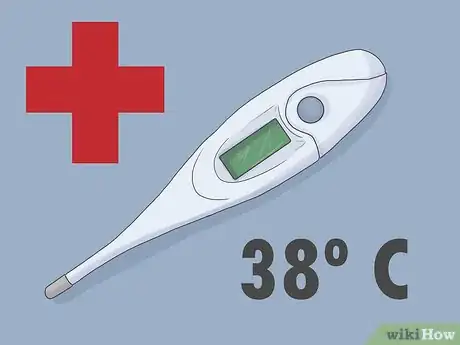
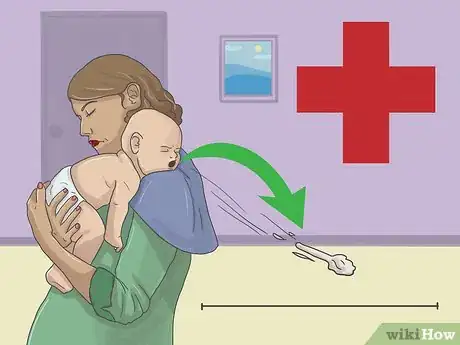
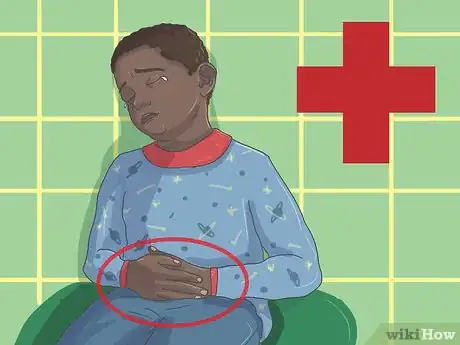
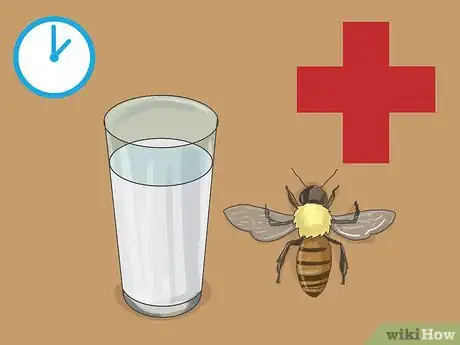



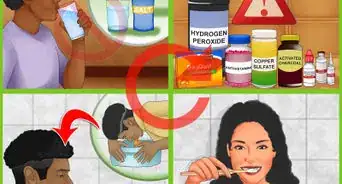




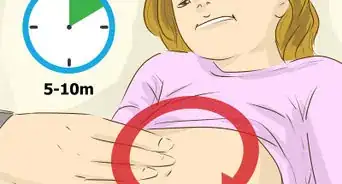



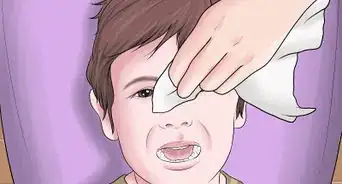

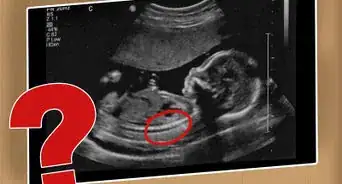









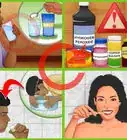




































Medical Disclaimer
The content of this article is not intended to be a substitute for professional medical advice, examination, diagnosis, or treatment. You should always contact your doctor or other qualified healthcare professional before starting, changing, or stopping any kind of health treatment.
Read More...